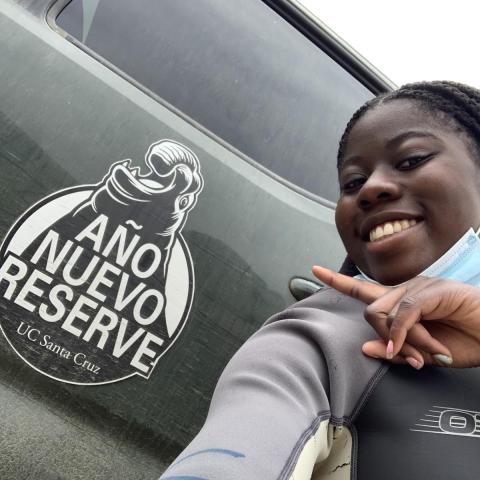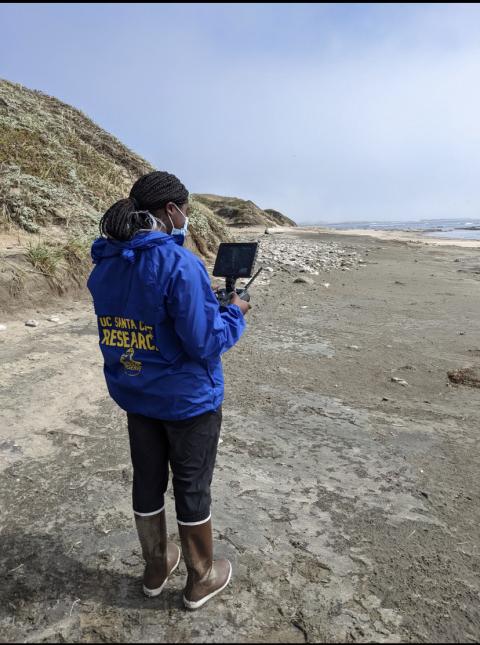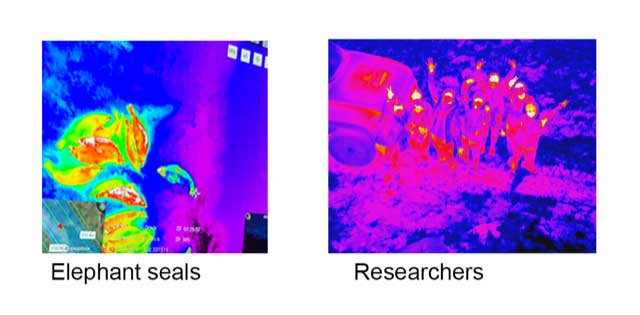
From Queens to coastal California; how elephant seals drew Ianna to Northern California.
An 8th grade Earth Science class sparked Ianna’s interest in science. Then teachers in high school told her about doing research in the Hudson River with the Lamont-Dougherty Earth Observatory of Columbia University where the focus was climate and earth sciences. Ianna jumped in!
Ianna eventually researched data about Arctic ice with Dr. Robert Newton. The following summer Ianna worked as an intern for a grad student at Yale University where her project consisted of using QGIS (Open-source GIS) to map both past and present parks in NYC.
Throughout her education, Ianna’s experience shows us that there are many summer opportunities a middle and high school student.
Now a junior at Brandeis University, Ianna combines her interest in environmental studies and computer science. Looking for opportunities to get out into the field, Ianna was chosen to be a Doris Duke Conservation Scholar at UC Santa Cruz. The first summer of that program is a field course where scholars participate in a fully immersive, field-based course focused on collaborative research and interaction with a diversity of leaders in conservation and science. The goal is to nurture the students’ spark for conservation science. Ianna discovered that she loved the marine environment during her experiences at the UCSC Big Creek Reserve on the Big Sur coast and in the tide pools at Pt. Reyes.

In the second year of the program, summer 2022, Ianna had an internship with UCSC studying the behavior of elephant seals throughout the day. On her third day, in an introduction to her study animal, she accompanied scientists to the beach at Año Nuevo and helped in sedating, taking blood samples and measuring the seals. These are huge animals: it felt “foreign and somewhat frightening”, Ianna says. As she walked around with the scientists, she got more comfortable and was able to get closer to the seals.
Her project was working with drones to test their effectiveness in providing data on the seals. Ianna was doing the research with Roxanne Beltran, Assistant Professor of ecology and evolutionary biology at UCSC. Scientists are increasingly using drones for wildlife surveys in places where it’s difficult or dangerous to be, and also at night. The drones take both photos and videos using thermal imaging and color cameras.
There are two cameras on the drone: one for day and one for night. The thermal camera on the drone collects temperature data that allows scientists to see the placement of the seals even at night. Since the thermal camera can pick up temperature data and translate that into a range of colors, researchers are able to visualize and depict objects such as seals. The redder the color, the warmer the object; the bluer the color, the cooler the object. The drone flights are held from 5-8AM and 7-10PM once a week. Ianna is interested in elephant seal behaviors and which ones they exhibit at specific times of day or night.

Climate change
Imaging of the elephant seals (both still and video) can help scientists compare how things have changed because of climate change. Drone footage combined with tags on elephant seals, for example, can reveal changes in behavior patterns. Climate change is an underlying theme in conservation science: in the Doris Duke Scholar program the students are encouraged to think about contributing to our understanding of climate change.
Ianna wants to continue to explore marine organisms and ecosystems. For the upcoming Fall 2022 semester, she will be participating in a study abroad program in Panama with the School of Field Studies. During the semester students take classes and explore possible research projects to participate in.
In Ianna’s future: combining computer science and biology to understand animal behavior, using drone research and GIS. Grad school is definitely on the horizon. She would like to encourage middle and high school students to seize opportunities to do research and never settle on just one option. Ianna advises students to explore widely – terrestrial and marine ecosystems and animals. And know that, “there’s value in every experience in science that you have.”















